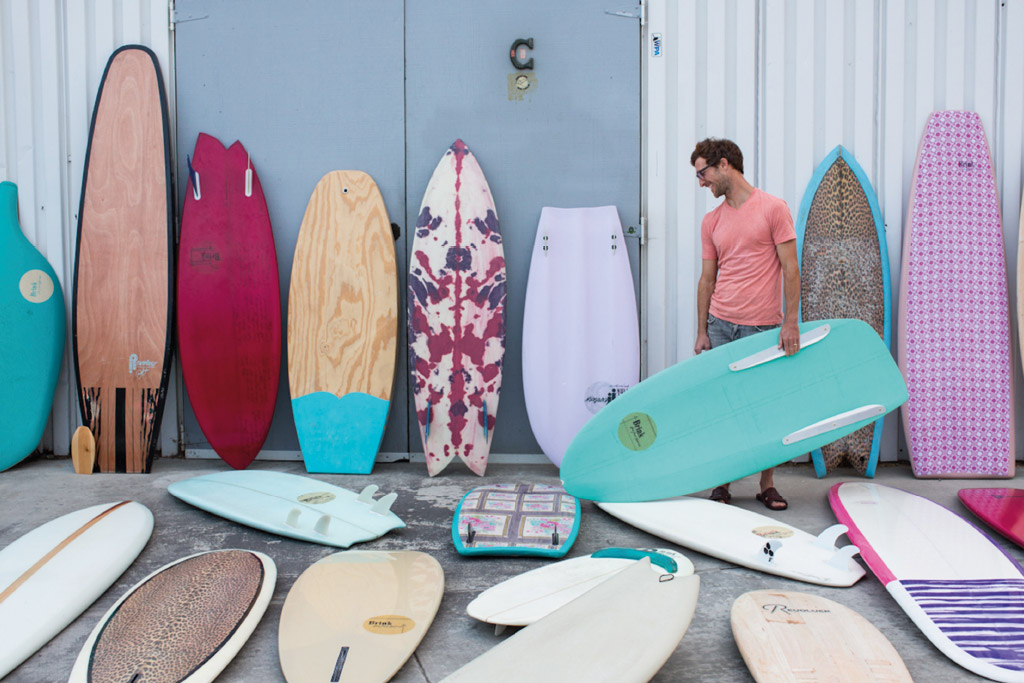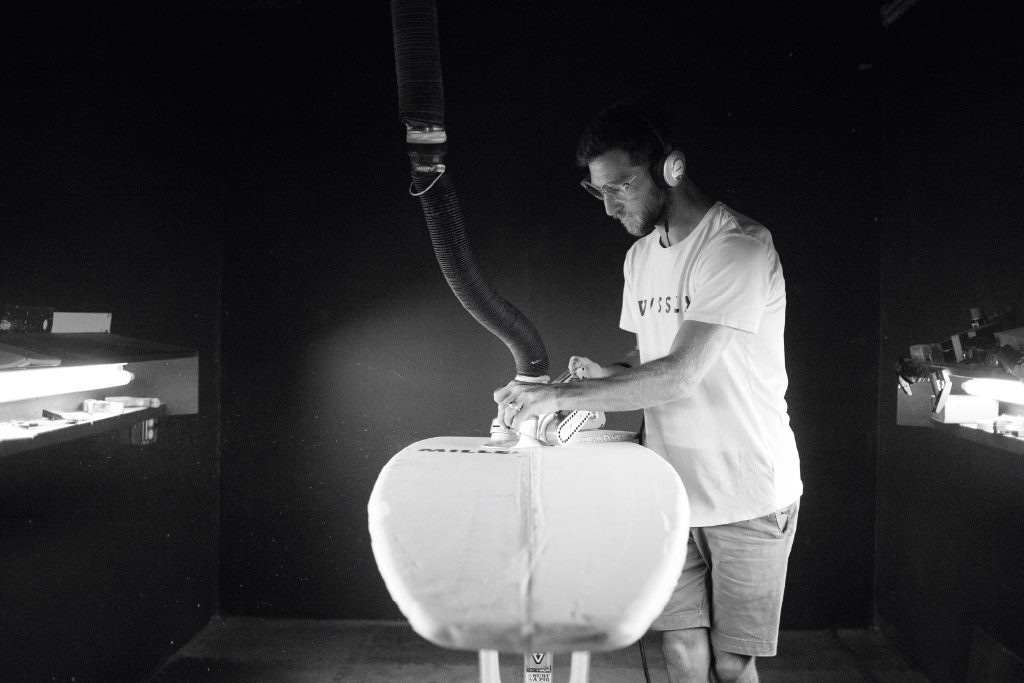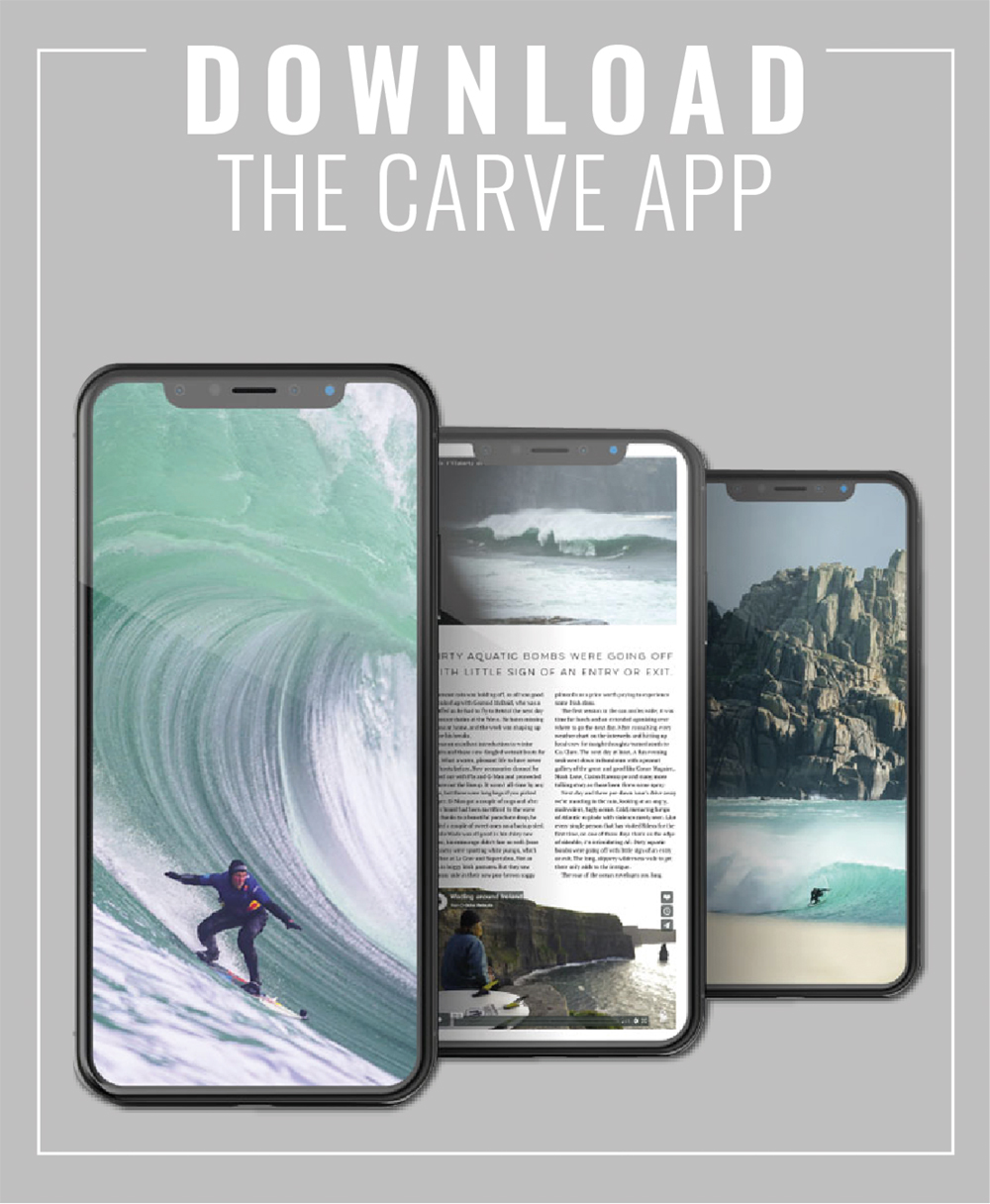Donald Brink is producing some fascinating boards based on some very interesting concepts, like foot size. Steve England caught up with him on a recent European tour to find out more about feet and asymmetry.
Photos courtesy Vissla/Donald Brink
Where are you based?
I’m currently based in San Clemente, California. I grew up in South Africa and moved to the coast when I was fifteen. I wanted to surf and started two days after arriving. We would frequent the beach on family vacations but it was the fascination for the sea at that stage that seemed most compelling and yet the depths of surfing are still uncovered to this day in my eyes. Beginning to surf at such a late age has perhaps made the preciousness of playing in the sea so real and maintains the grom status within me.
How long have you been shaping?
I was intrigued with boards and always interested in how things work, but started out doing art and painting, always involved in the creative process. When it came to ding repair and curious wonderings about the differences between one board and another I began seeking the input from local shapers and went on to earn a spot to learn. I started out doing ding repairs, some hot coats, glassing and fins. This time was all set up to observe the shaping process. David Van Ginkel and Robin Fletcher Evans were gracious in their role of letting me observe and it wasn’t for a long while that I picked up the planer myself and applied my learnings. It felt like such a vulnerable and solo act but was somehow right and deserved the respect and attention to enhance what was felt while engaging in its intrigue. It’s not rocket science but one has to know a little bit about rockets. That was ten years ago since I shaped my first one and I spent a long time building boards start to finish. The details can be endless. Perhaps understanding the disconnect between vision and relative applied design is the biggest learning curve in building the right board for the right person. That’s kind of a motto for me and I’m committed to pursue excellence for the benefit of any wave rider.
I see you put quite bit of thought into the design process, including asking for a surfer’s shoe size. What are the concepts behind this?
We have all heard it said that a good board is just an extension of your feet. Well if you look at those feet, it shouldn’t be surprising the difference in leverage and weight distributions from one size to another and perhaps the easiest way to establish why a good board could look different with a synergy of elements marrying the concepts in between. People with bigger feet have an advantage when it comes to surfing and the subtle control applied that is required in any wave ride. You can tell a lot about the way a person walks and stands, these practiced antics will enter the water with them too. It might be a place from where you enhance or correct a skill for consistent rides but it’s certainly a consistent element and I look to it as an important detail in building what truly is a custom board.
On your heel side rail you can always add weight to the arc, turn or rail adjustment. Your rear end is a heavier leverage and your pivotal ankle is toward that end. There are no toes behind you and thus the ability to remove this weight is to so much less of a degree than that of the toe side which could thus be described as a lighter more sensitive rail due to the leverage span and off set fulcrum.
Asymmetrics were quite big the past, but they never really caught on. What are your thoughts on the design?
Referencing the thoughts discussed on the foot’s pivotal point and the weight distributions. I believe in building stance specific boards. That means you can surf both left and right but its suited to accompany the way you stand. It’s a difficult task building anybody a surfboard but applying the asymmetric changes to suit your stance can help you surf the way you stand and that’s the most progressive thing I think you can apply to any good design to varying degrees to assist in serving the vision and maintaining the desired flavour of the board in question for a surfer. Right board for the right waves in the fashion of the way you are expected to drive either the toe or heel rail due to stance. They are the best boards I believe it.
Can you explain your take on them and how it may differ from those of the past?
Honestly I don’t look to the past or reference a lot of those things. I shared some wonderful conversations with Carl Ekstom and Ryan Burch recently it seems like we all have very similar cause and effect on building boards for the reasons we do and when and how to embrace the asymmetric changes. The early years were perhaps focussed on wave or direction specific boards, so boards for lefts or rights. I call these the one trick ponies and although I have built some and design accordingly for these kinds of conditions. My passion lies in a board than can naturally work better in any condition if the expectation of your stance is given. Go left or right but stand one way. Even on a front side point break you are going to spend critical time committed to the heel side beach rail and if we set you up to succeed accordingly you could be better off connecting tight arcs and sections. If one thinks about the common difficulties in any part of your wave riding, the times when its most difficult to manoeuvre where you need to be and at the rate required these consistencies and frustrations are what can be the motivation for change and thus designed around.
Do you use computer programmes to map out designs or shape by hand?
Everything is hand shaped. I love shaping but I also think it would be difficult to program the details involved in these boards, never mind be able to manipulate them on demand from one order to another. I love the act of going from a plus sized blank and whittling away on every part arriving at a cohesive assembly of the imagined elements in full scale with a few rudimentary tools in my hands. It’s also the most versatile way to go from one concept or model to another.
How do you blend concave/hull shape to the asymmetric plan shapes?
The elements must all work together in any good board. I spent years figuring out the cause and effect of the change in elements throughout the designs. Once there is an understanding of certain fundamentals the cohesive incorporation of the right ones and the affect their change can have on one another is what’s in the power of the craft. I usually apply a few subtle changes to a concept and these six or seven things working together create the desired results without making a board feel any certain way. I strive to build boards you cannot feel or surf around, but simply surf the lines you desire. It’s a concept applied to promote good wave lines not leave one with an aftertaste of their nuisance as much as the flavour of a board can have a chosen sensation. Its different rails, twisted rockers, off set fins and division of contours over the ankle more. Few small changes like this make things different enough for normal surfing with a natural approach, or goofy.
Is there a type of wave that asymmetrics work in best? I have seen some really cool guns in the past and a few shortboards, not so many small wave boards.
The concept can be applied to any and every board you are expected to be standing on in a certain way. Logs and mid-length are to a more subtle degree because you are expected to move across its surface to make it work. For fixed position rides it’s king. I have made some good guns and step ups but I feel on larger waves with bigger canvases to turn and with speed in your corner the foot’s limited ability is less of a frustration. On a small wave when you have to accurately respond to every area to connect the dots and generate speed a more brave and exaggerated effect can be applied. I spend most of my time designing and promoting grovel quivers even though building any board is a treat guns and grovellers could easily be my first love and endless fascination.
In your opinion what is the most under utilised yet potentially most profoundly influential design theory in surfboard manufacture?
Fins. I feel they are the most bold extension on most shapes and depended on so heavily for our desired wave rides. This is a deep and mysterious realm. Ones that work could work better, ones that don’t might not be far off, the details are magnified and have the quickest fail rate on a sense you might be depending on. Rocker is essential and all elements work together but fins are a wonderful thing.
Do you think clinker channels will make a come back or is all about subtle concave and vee variations?
Channels are king, I am building many and love the fleeting sensations they provide in a wave ride. This memory of a split second nuance is what I gather up and walk away with remembering from a session and this is what surfing is. They are depended on for glassy barrel waves and certainly do assist such things but I’m working on their favoured release in top turns in a grovelling realm to promote fast sensations and memorable holding arcs. Machines can’t build them and glass shops shy away, but any good craftsman knows how to create a lasting beautiful work like this. Ask anyone if they have ridden channels, most haven’t, if they have they will go into detail about a few waves and the memories of that board. I want to build boards that people love and can depend on for harvesting stoke. These channels are easily some good ways to go about things. The last board I shaped was a three channel. It’s going to a seasoned pro, stay tuned.
Are you experimenting with any different materials?
Always tinkering with available materials. The epoxy world in California is growing quickly. I’m working on some things with Marko Foam and their recycled line. Sustainable boards interest me but the volume I’m creating hardly offsets the meter in terms of the impact on the environment. What I feel is more progressive right now in my operation is to delve deep into the details of design that can then be applied to any material or concept that keeps emerging and thus empower or embrace its change. Design is my role and it’s a large and global community of creators and innovators. It’s an honour to partner with people in their wave rides and I feel it important to share any and all information to learn and grow together. We can together move the future forward and let’s be honest we are forever dependant on the discoveries of the past that we can be grateful for and their dedicated input and understanding. Let’s do the same, let’s enjoy our water.









